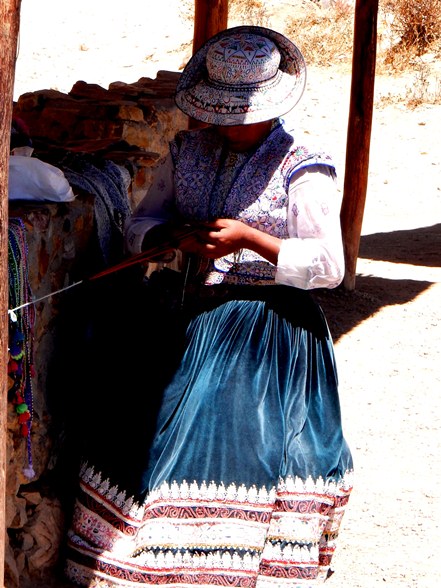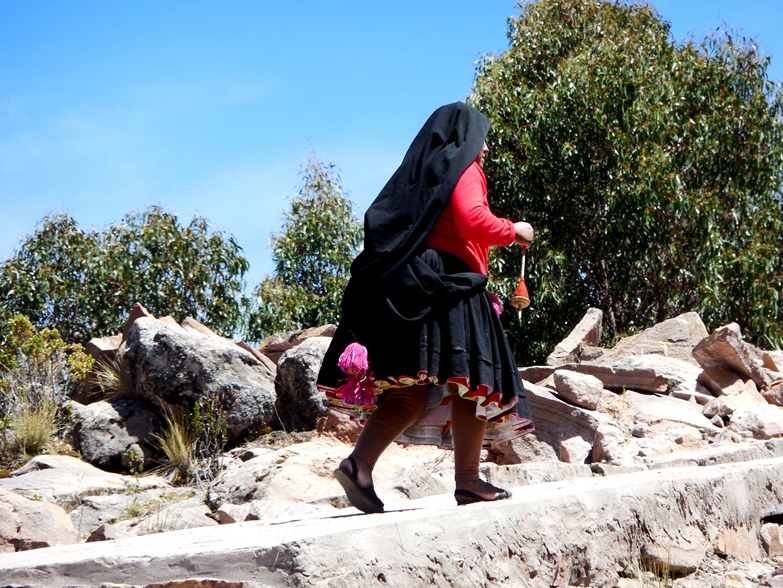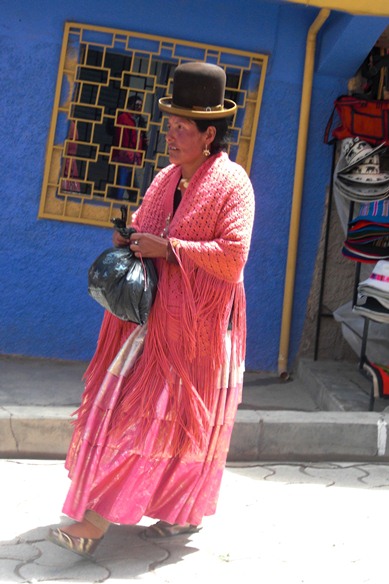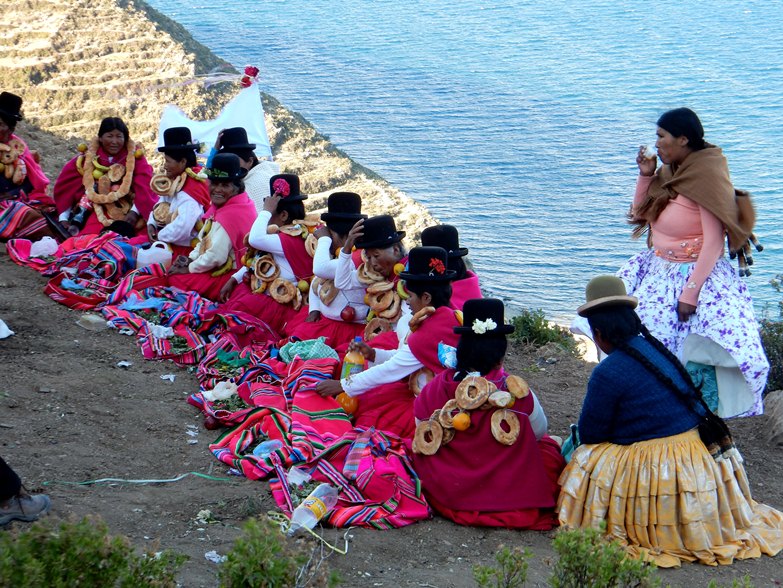Women Of The World – South America
As a lover of both fashion and tradition, I gravitate towards places where the indigenous people are still steeped in age-old customs; where women wear traditional clothing unique to their region; where handicraft is produced employing techniques and tools passed down from generation to generation.
In this – the first of my Women Of The World Series – we travel to South America.
Ecuador – Otavalo.
Women in the market place.

Ecuador: The mother of our driver and guide wears this elegant outfit in the fields. She and her family live a forty minute drive from Cuicocha. Their home, and fruit and vegetable farm are surrounded by volcanoes and fields of flowering quinoa.

Cusco – Peru: All over Cusco one sees women dressed in multi-layered, knee length, skirts, carrying babies or goods wrapped in woven blankets on their backs. They braid their long black hair and wear dark brown, or tan, felt hats. Their furry llamas are like docile dogs.



Ollantaytambo – Sacred Valley – Peru: The women’s skirts are bright, playful and embroidered. They are also extraordinarily heavy. I tried one on and couldn’t imagine walking around with all that weight around my waist. The hats are colorful and utterly charming. One is a jaunty little hat that perches on the side of the head – while the other reminds me of a decorated, fringed lampshade.



Pisac – Sacred Valley – Peru: Strips of embroidered fabric decorate the layered skirt of this young woman. She pairs her skirt with the customary, monochromatic cardigan.

Chincero – Sacred Valley – Peru: Chinchero is a small Andean village overlooking the Sacred Valley. Here women strip the fur from pelts; wash the fur; spin it into yarn; dye the yarn using dyes made from flowers, herbs, and vegetables; then the weaving process begins. The rhythmic motifs woven into the fabric are unique to the Chinchero. They represent the Apus (The Sacred Andes), the Inca calendar, Pachamama (mother earth), Apu-punchau (the sun god), etc. Chinchero women wear black skirts, white ruffled blouses, red hats, and red cardigans.



Chivay – Colca Canyon – Peru: It’s hard to believe that there’s a place in the world wear women still wear such elegant hats and embroidered full-length dresses, to go about their routine daily chores. There are two styles of hats worn in the Colca Canyon region. One has a short brim tipped downwards, and the other has a wide brim. This is how the two indigenous groups – the Collaguas and Cabānas – who have coexisted peacefully since pre- Inca times, differentiate themselves. Before the arrival of the Spanish, however, one group had elongated heads and the other flat, square heads. They achieved this by tying two pieces of wood to an infant’s head until the shape of the head was permanently changed. The Spanish found the tradition barbaric and so the custom of wearing different shaped hats was instituted.



Puno – Uros Floating Islands – Peru: The Uros Islands, created from Totora reeds, are floating islands on Lake Titicaca Peru. The Uros people, who predate the Inca, fled to the waters of the lake to avoid persecution at the hands of the Aymaras. The islands are populated by small communities consisting of four to ten families. They eat fish from the lake, eggs from the ducks, and barter their handicraft for other supplies. Tourism has also become a source of income on fifty percent of the floating islands.


Amantani Island – Lake Titicaca – Peru: The women of Amantani wear multi-layered, heavy skirts; beautifully embroidered blouses and woven shawls. We stayed in the home of this kind, gentle, strong woman. She, her husband, and three children were gracious hosts.

Taquile Island – Lake Titicaca – Peru: On this idyllic island which boasts a population of two thousand, married women wear dark colored skirts with numerous brightly colored petticoats. Young girls wear skirts in cherry-red, sunflower-yellow and turquoise-blue. Young girls wear oversized pom-poms hanging from their shawls and married women, smaller pom-poms. The people are never idle. While they walk the women spin yard and the men knit.

Copacabana – Lake Titicaca – Bolivia: The Bolivian women wear ankle length skirts, matching shawls and tall, rather masculine looking, bowler hats.
La Paz Airport – Bolivia: This beautifully dressed lady and I were seated next to one another at the airport in La Paz. She looked so elegant for the flight, while I looked like Cinderella who had only her rags to wear to the ball.


Isla – del Sol – Lake Titicaca – Bolivia: On a hillside in the late afternoon we stumbled across this private celebration. The islanders were celebrating the end of the planting season with dance, music, and drink.


Buenos Aires – San Telmo – Argentina: Buenos Aires and Tango are synonymous. In the cafés, the plazas, and the milongas (dance halls), one can’t help being captivated by the tempo, grace, romance, and magnetic charm of the sensuous Tango.


